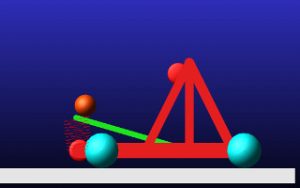As a technology house, supporting many different customers, in many different industries, SIMTEQ Engineering has seen it all. From designs born on cigarette boxes and coming to life as manufacturing progresses, to completely virtually designed and commissioned products that saw very little design improvements needed over time.

As a technology house, SIMTEQ Engineering has access to many technologies which are all used in supporting the product life cycle, which starts with a concept, is followed by various design stages, prototyping, testing, manufacturing and eventually maintenance and support (and sometimes even recycling).
Unfortunately, we also often see how these technologies are abused and misused and the whole design cycle of a product being executed back to front. It is not uncommon for products to be manufactured and after some failures occur, that the analysis team is consulted to look into the problem. The bigger problem at that stage however is that normally so much is already invested in the design (if not already sold to a customer or customers) in the form of 3D CAD drawings, ordered material, manufacturing processes etc. etc. that very little room is left for any design change to fix what ever is wrong.
There couldn't be a more expensive way to develop anything.
Many times, the lack of access to technology can't even be blamed, since its more available today than ever before, but a hastiness to deliver can be. An eagerness to deliver faster and faster to an ever demanding market is often the cause why some epic disasters ensue.
Today I would like to address one common mistake almost all designers make: Rushing from the boardroom white board to their CAD stations. The fact is, even if they have an analyst at hand to check the strength and feasibilities of their designs, the analyst would almost always ask for a CAD file to analyse, which further supports this hastiness to get something done on the CAD station.
STOP right there!
That approach is wrong and totally unnecessary. But, you may ask, how do you start to evaluate a design's feasibility if its going to be a physical product and you don't even have a virtual representation (CAD) of it?
The answer is easy: Concept simulation (without any CAD model being required).
I will merely talk about a much smaller subset that is more applicable to systems consisting of mechanisms or even single parts that are assembled in moving systems and therefore see varying loads throughout its life.
Concept simulation is when you take a drawing on a cigarette box or napkin, and quickly construct a physics based virtual representation of the moving parts without any consideration (at first) of connection details or actual shapes and sizes.
Let's take the design of an ancient catapult as an example:
And now you wish to know if it will work, so the next step is a 3D CAD model, right?

No, no no!
The next step is a simple dynamic model:
This little model was built in a few minutes, is fully parametric and the actual dynamics are solved, see below (and already showing one essential design item missing)!
https://www.youtube.com/watch?v=noACbyciq4M?rel=0
Oops! No brakes! (Apart from the fact that the General standing near the catapult is more likely to be hit than the intended target!)
The good news is: Now we can spend our efforts on perfecting the concept, rather than trying to save an almost lost project by undoing as little as possible on the detailed design and possibly stopping a few very expensive purchase orders!
Adams from MSC Software is the perfect "napkin sketch-to-simulation" package to quickly get the design space defined which will only then be followed by a detailed design, where after the concept model in Adams can be updated by the now more feasible and accurate CAD geometry. Since mass and inertia will then be accurately captured for each component from the detailed CAD geometry, only a few slight design changes might be expected, rather than a complete "back to the drawing board" design review.
Learn more about Adams here.
Wish to get started using Adams? Look no further than this site.








